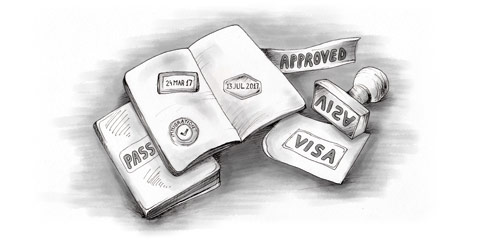Category H
In general, these visas are based on a specific offer of employment from an employer in the US.
There are 6 sub-categories of the H visa. This means the type of visa will depend on the type of work you will be doing.
- H-1B visas: workers in specialised occupations e.g. lawyers, accountants, doctors of medicine, nurses, teachers and scientists, with a degree or equivalent experience
- H-1C: registered nurses
- H-2A: seasonal agricultural workers e.g. picking crops or other short-term jobs on farms or ranches
- H-2B visas: workers filling jobs that cannot be filled by US citizens or residents
- H-3 visas: trainees for on-the-job training or work experience in a field (such as agriculture, commerce, communications, finance, government, transportation or the professions)
- H-4: Family of the above visa holders
Category L, O, P and Q
(L) Intra-company transferees
People employed abroad who are transferred to a branch, subsidiary, affiliate or joint venture partner of the same company in the US (which must be at least 50 percent owned by a foreign company) can apply for an L visa.
There are two types of employees that can be sponsored for an L1 visa:
- L1A executives and managers
- L1B specialized knowledge staff
(O) People of extraordinary ability
Category O1 visas are for people who demonstrate extraordinary ability in the field of arts, business, sports, science and education. O2 visas are issued to the support staff and crew of the O1 holders (e.g. television crew).
(P) Athletes & entertainers
Category P visa covers entertainers and athletes who don’t qualify under the extraordinary ability of the category O visa. This is for foreign athletes who compete individually at an internationally recognized level and for people that are part of an entertainment group that has received international recognition as “outstanding” for a “sustained and substantial period of time”.
(Q) Cultural exchange visitors
Category Q visas are for people involved in international cultural exchange programs that have to take place in a school, museum or business. With this visa, you can enter the US for practical training and employment (e.g. sharing the history, culture, traditions of your home country) through participation in an international exchange program.
More information about the different types of visas can be found on the US Department of State website. When applying for a visa, make sure you are doing so through an official government website, as there are many websites that scam you into paying for a visa without ever receiving one.

